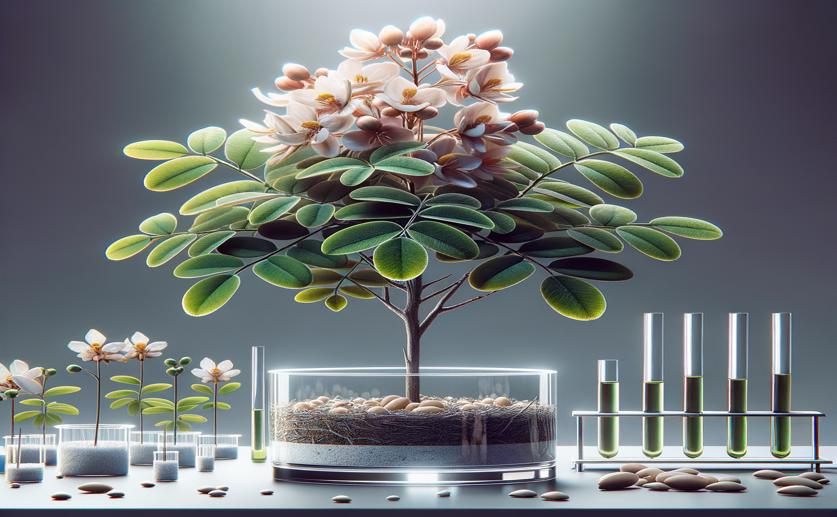
Understanding How Seed Treatment with Colchicine Changes Acacia Nilotica
Greg Howard
22nd May, 2024

Image Source: Natural Science News, 2024
Key Findings
- Researchers from The Islamia University of Bahawalpur found that treating Acacia nilotica seeds with 0.07% colchicine significantly improved plant growth
- Colchicine-treated plants showed increased plant height, leaf size, and stem diameter, indicating enhanced vigor
- Treated plants also had higher chlorophyll content, better photosynthetic efficiency, and increased levels of antioxidant enzymes, suggesting improved stress tolerance and productivity
References
Main Study
1) Exploring the mechanism of transformation in Acacia nilotica (Linn.) triggered by colchicine seed treatment
Published 21st May, 2024
https://doi.org/10.1186/s12870-024-05139-9
Related Studies
2) Studies on Colchicine Induced Chromosome Doubling for Enhancement of Quality Traits in Ornamental Plants.
3) The polyploidy and its key role in plant breeding.
4) Natural and induced polyploidy in Acacia dealbata Link. and Acacia mangium Willd.
Journal: Annals of botany, Issue: Vol 90, Issue 3, Sep 2002
5) Potential chemoprevention of N-nitrosodiethylamine-induced hepatocarcinogenesis by polyphenolics from Acacia nilotica bark.



 20th May, 2024 | Jenn Hoskins
20th May, 2024 | Jenn Hoskins